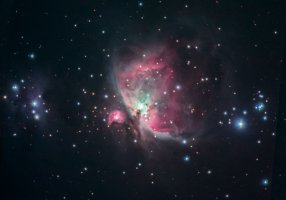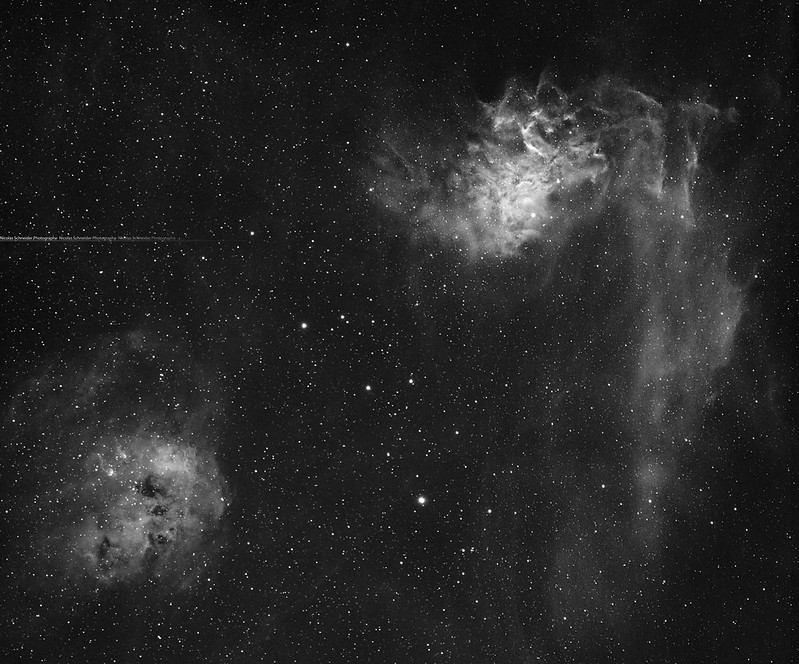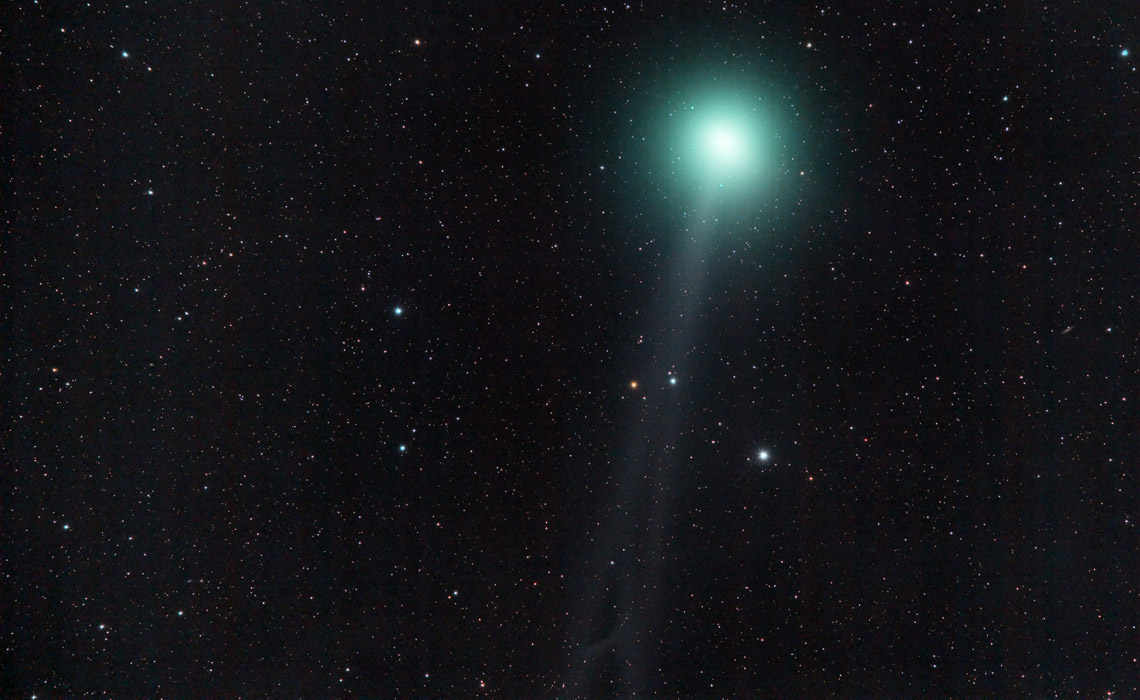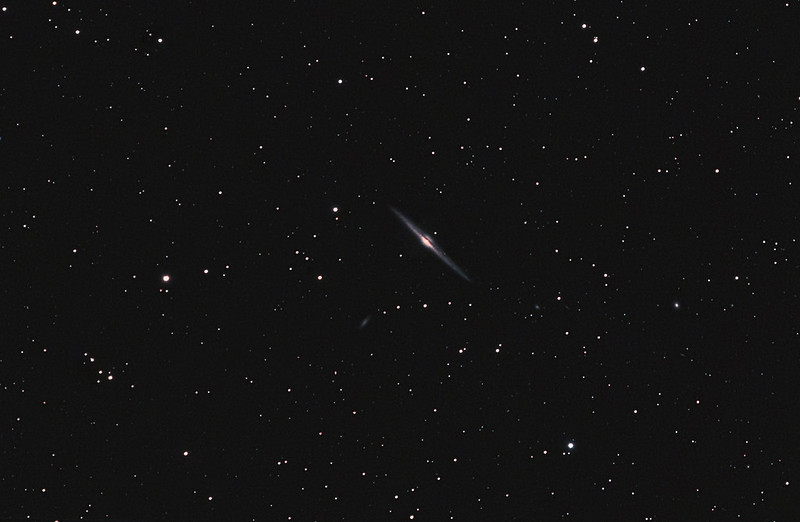Finally I have something I don't feel too embarrassed to post. Here's my Orion Nebula...
This is a shade under 90 minutes' integration. Actually it's an unorthodox combination of 400mm and 500mm shots, as the Affinity stacking is pretty good at lining things up and rescaling. I started at 400mm (the 70-200 + 2x), then tentatively tried my 500 on the same mount, which worked fine.
I got the Star Adventurer, and it seems mostly what I wanted: easy and quick to set up, and with the weight capacity I needed. It's not go-to, but my go-to mount rarely went-to where I wanted anyhow, I never could figure out why.
80x30secs + 81x25secs both at 400mm, and 62x15secs at 500mm with an Astronomik LP filter (which fits in the 500L's drop-in filter), all ISO 3200 I think (all wide open, so f/5.6 and f/4 respectively). Preprocessed in Lightroom, stacked and normalised in Affinity, finished back in Lr.
We only get one clear night in maybe two weeks here, so it'll be slow progress, but I do still love it.
This is a shade under 90 minutes' integration. Actually it's an unorthodox combination of 400mm and 500mm shots, as the Affinity stacking is pretty good at lining things up and rescaling. I started at 400mm (the 70-200 + 2x), then tentatively tried my 500 on the same mount, which worked fine.
I got the Star Adventurer, and it seems mostly what I wanted: easy and quick to set up, and with the weight capacity I needed. It's not go-to, but my go-to mount rarely went-to where I wanted anyhow, I never could figure out why.
80x30secs + 81x25secs both at 400mm, and 62x15secs at 500mm with an Astronomik LP filter (which fits in the 500L's drop-in filter), all ISO 3200 I think (all wide open, so f/5.6 and f/4 respectively). Preprocessed in Lightroom, stacked and normalised in Affinity, finished back in Lr.
We only get one clear night in maybe two weeks here, so it'll be slow progress, but I do still love it.
Attachments
Upvote
0





